Digital marketing can be a challenge. It’s a pursuit that typically requires a mix of sales skills, technological literacy, and financial know-how. These abilities will only become more important as customer preferences continue to evolve. A digital marketing funnel is a tool that lets you manage and balance the needs of the customer with the needs of your small business.
The digital marketing industry is projected to be worth $242.8 billion by 2024. As budgets and potential revenue grow, you might want to find a way to harness your skills more efficiently. This can be especially important for small businesses looking to maximize the returns on their efforts.
Fortunately, there are opportunities for you to create a framework for success. You can use the digital marketing funnel technique to create a killer plan to maximize sales. By familiarizing yourself with what it is and how it works, you can take advantage of this approach to improve your strategy.
In this article, we’ll define exactly what digital marketing funnels and sales funnels are. We’ll go on to look at their relationship and how they can effectively work together. Then, we’ll explore how a small business can leverage these tools and offer some advice for coming up with a comprehensive plan. Let’s dive right in!
What Is a Digital Marketing Funnel?
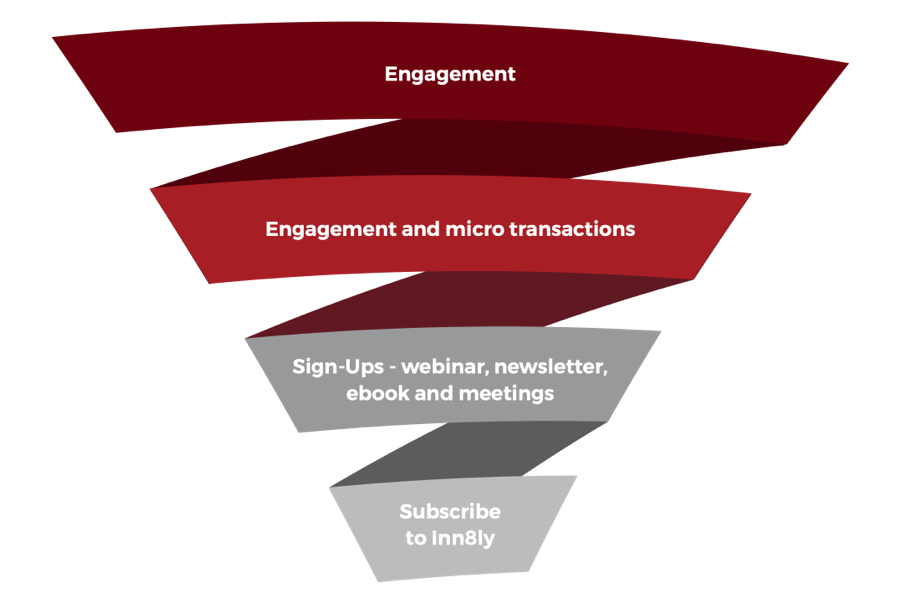
A digital marketing funnel is a strategy that you can use to encourage people to go from being merely aware of your brand to dedicated customers. It works by tailoring your efforts to whatever part of the buying process the person is in. There are three sections: the top, middle, and lower funnel.
The top of the funnel is the widest portion. It represents generating awareness among your target audience. At this stage, you’ll want to complete actions that attract attention. Some examples include running general ads and producing helpful blog posts within your niche.
Once you have an audience familiar with your brand, you can move on to the middle funnel. This section is characterized by minor acts that help build trust with potential customers. These often include engaging with users in the comments section of your blog or microtransactions such as getting leads to sign up for an email list.
After you’ve built a relationship with an individual, you can begin to close the deal in the lower funnel. This stage benefits from the work that’s been done in the top and middle sections. Activities include driving targeted purchases or encouraging current customers to invest in more expensive products.
The funnel structure makes it so you can foster a steady relationship with your audience. Each stage builds on the one before it. By relying on a balance of traffic, trust, and value, a digital marketing funnel can help you efficiently direct your resources.
For more on marketing funnels, read our post, Want a Non-Icky MARKETING Funnel—Learn From the Fuller Brush Man.
What Is a Sales Funnel?
You may have heard the term ‘sales funnel’ used interchangeably with a digital marketing funnel. While they share a similar structure, they’re actually distinct strategies. A sales funnel is a subset of the digital marketing funnel. It occurs in the lower section and is meant to enhance the purchasing process.
One example of an action in the sales funnel is upselling customers for more expensive purchases. Another is an order bump, like when an online clothing store suggests pants that would match a shirt currently in your cart.
It’s important to remember that a strong digital marketing funnel is improved, not replaced, by a sales funnel. Actions in the sales funnel rely on the awareness and trust-building completed in the digital marketing funnel. If you’re looking to make the most of your sales, use both strategies together.
How to Create a Digital Marketing Funnel – Digital marketing is a field growing in value. See how to adapt your skills to take advantage of this by using digital marketing funnels. Share on XHow Do Digital Marketing Tactics Fit Into the Digital Marketing Funnel?
When it comes to promotional tactics, the hub and spoke strategy lays the foundation for success. Your website acts as the hub of your efforts. Your various media channels are your spokes, and your content makes up the rim.
All elements need to work together to keep your sales moving. This holistic approach can help make sure that no part of your efforts falls flat. You can apply it to an effective digital marketing funnel with some of the following strategies.
Search Engine Optimization (SEO)
Search Engine Optimization (SEO) is the process of improving how visible your brand is to people conducting online searches. It plays an important role in your website’s success by attracting visitors who may not have been aware of your brand before.
While most businesses will want to improve their SEO, small businesses in particular might take a different path. That’s because of the differences between local SEO and national SEO. Improving your local SEO will likely require different keywords, less expense, and a more targeted approach than improving your national SEO.
If you’re a small business owner, you might want to consider shifting your resources into local SEO boosts. You’ll likely reach more relevant groups. And you won’t have to compete with national brands.
Take a search for the keyword pizza, for example. This broad term brings up some big franchises:
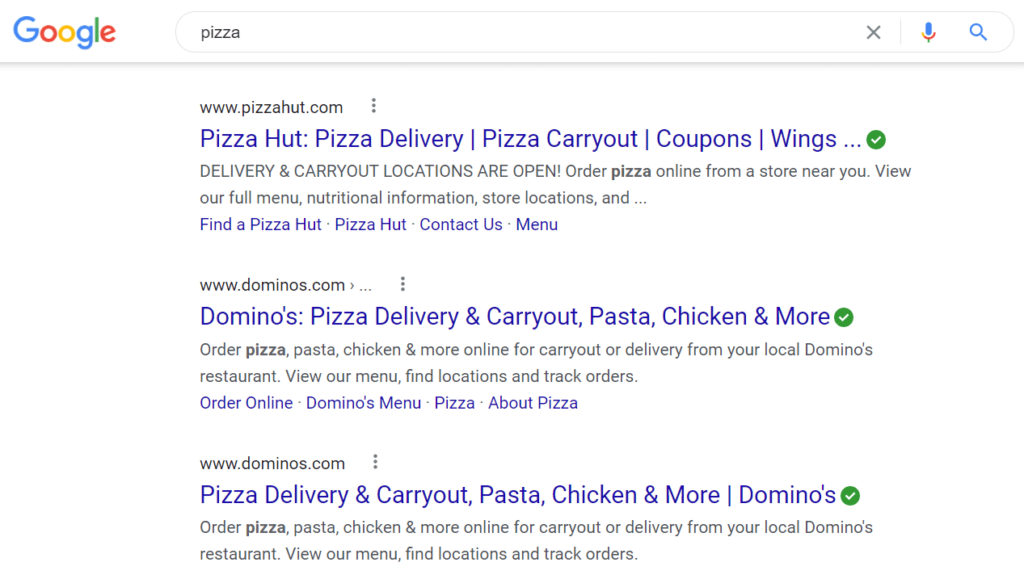
However, local customers might be more specific with their searches. Let’s say you’re a pizza restaurant based in Washington, D.C. People who live in the area might instead search with the term washington dc pizza. That will bring up more location-specific results:

Producing more relevant results for people in your vicinity might be a better use of your marketing budget. Since these efforts work to raise awareness of your brand, SEO is best used at the top of the digital marketing funnel.
Social Media Marketing

Organic Social Media
Social Media is expected to reach 4.41 billion users in the next four years. Running your own website is critical, but that doesn’t mean you shouldn’t take advantage of opportunities on other platforms.
Having a consistent, organic Social Media presence provides a lot of benefits. For one, it’s an affordable way to increase your visibility. It can also encourage user engagement, provide you with useful analytics, and build your brand’s story. Here’s an example Facebook page from the San Francisco-based grocery, Canyon Market:
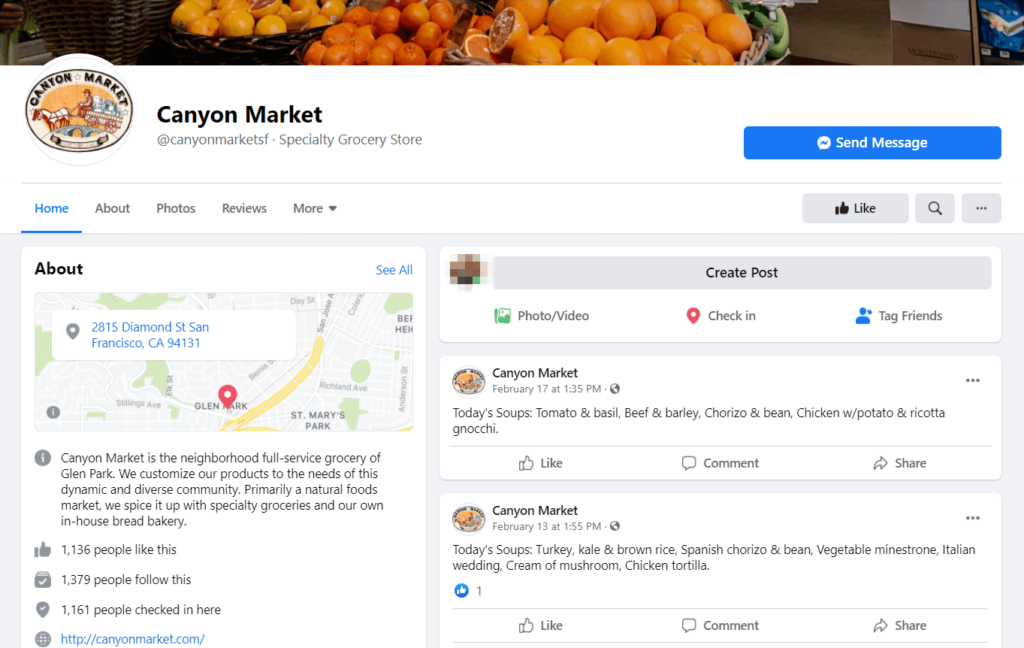
In addition to these benefits, Social Madia also offers a highly customizable strategy. The minor investment and major versatility make it a realistic tool for small businesses.
Social Media can be used at the top of the funnel if you’re just looking for exposure through maintaining an active presence on your chosen platform(s). Alternatively, Social Media can be used in the middle to attract followers who’ll engage with your profile. For example, Pinterest is the only social media channel that rewards link clicks. As a result, it’s a good platform to use to generate interest in blog content on your website. There are many ways that Social Media can be used within your content marketing strategy.
Social Media can also become an overwhelming burden. For more efficiency, read our blog post, Transforming Your Content Game with Smart Repurposing for Social Media.
SM Advertising

In addition to creating profiles on SM sites, you might also want to consider investing in their advertisement opportunities. It’s a simple way to boost your visibility and take advantage of a large potential audience. Ads on Facebook will appear as sponsored content, like this one for Top Dust:
You can also choose to target your ads. Getting specific will help you zone in on the customer demographics you’re trying to attract. More generalized ads can also be effective.
If you choose not to target your ads to specific groups, SM advertising is a tactic for the top of the funnel. Getting more specific and encouraging more interaction, however, places it in the middle. Consult the rest of your marketing plan if you’re not sure which section to focus on.
Email Marketing
Contrary to some email marketing rumors, this avenue remains a valuable tool. Mailing lists can be used to reach out to previous, current, and potential customers alike. They help you maintain consistent communication with anyone you feel might be a lead.
Another practical way to use email promotions might be to share deals and coupons. This can encourage future purchases. Perhaps more importantly, it can increase how much the recipients value and trust your messages.
Emails can be an effective tactic in the middle funnel, but they’re especially effective as a lower-funnel marketing tactic. High-value, meaningful interactions are effective when an email is used for mid-funnel relationship building, and a sales orientation is effective for lower-funnel communication.
For example, a mid-funnel email could share a blog post with information about using a product or service. If a reader clicks on a link to the blog post, an automation can send a sales email offering the product or service.
Other Avenues
With the versatility of marketing, there’s a nearly limitless number of other avenues you could pursue. We’ll just be focusing on a few powerful ones here to keep things organized.
One popular medium to consider is YouTube. If you’re comfortable creating video content, YouTube can be an effective and engaging platform. Giving people the opportunity to match a face to your brand might also make your appeals feel more personal.
Another avenue is hosting events. Meetups can encourage customer interaction with your brand and other customers. Personal connections can help build a sense of community around your product. As a bonus, successful events might generate more valuable marketing content, such as photos and testimonials.
If you want to really focus on the community angle, consider featuring User-Generated Content (USG). One example of this is obtaining photos from people who enjoy your product. You might choose to display them alongside positive reviews.
However, it can also work the other way around. Displaying work sourced from the community you operate in can be an effective way to garner attention, as the bakery Sweet and Tart has done by showcasing local artists:

Google Ads can also be an effective way to broaden your reach in a controlled manner. Read or post on this, Profitable Google Ads – 7 Steps to a Revenue Faucet.
As for where each of these avenues is located within the funnel, that depends on how you use it. Most options are fairly flexible. If you’re not sure where yours fits in, try looking at your marketing strategy as a whole to see which section could use some more support.
How Can a Small Business Use a Digital Marketing Funnel?
An effective digital marketing funnel gets the right message to the right customers at the right time.
The Right Customers are Your Best Customers
You probably want to devote your resources to individuals who are most likely to be responsive to your efforts. Aiming for the most likely targets can save you some time and make sure you’re being as efficient as possible.
If you’re looking for a way to figure out who your brand’s most valuable customers are, try using website analytics. There are a lot of tools that can report on your user base and help narrow your focus. For example, here’s a sample of what demographics might look like in Google Analytics:
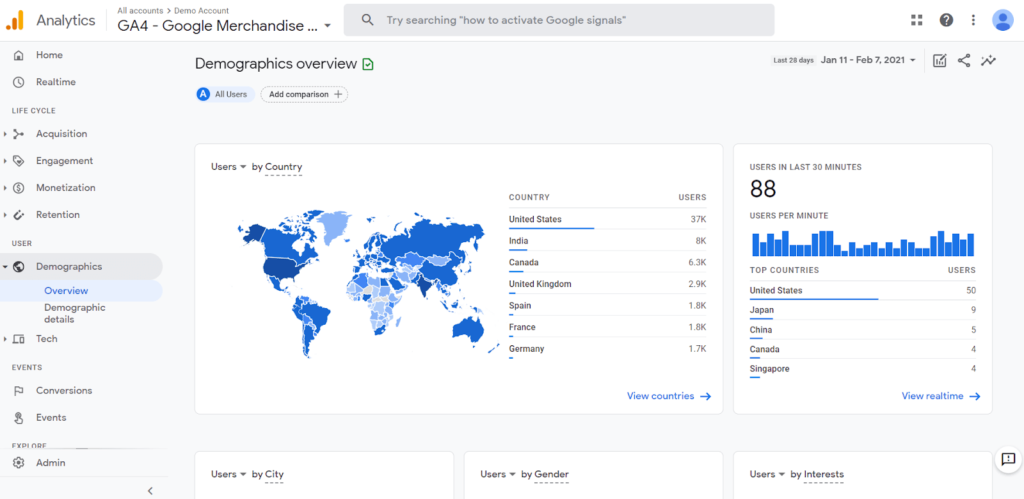
Knowing what types of people visit your site most often will give you some direction as to where to best target your efforts. It can also help you alter other elements of your business, such as hours of operation, to better suit that group.
You can also look at your customer base. For most businesses, 80% of their revenue comes from 20% of their customers. Each business’s specifics will differ, but the concept is sound. Find your 20%. Understand who they are and what they need. Serve them. Don’t worry about the rest.
Identify Their Problem and Show How You Solve It
Identifying a problem and offering a solution is a core part of marketing. Try to apply this classic tactic to your customer niche. The more specific you can be, the better.
For example, let’s say you run a local ice cream parlor. You’ve done your research, and you know that most of your audience is unsatisfied with products containing unnatural ingredients. You can solve their problem by offering ice creams without artificial sweeteners, colors, or flavors.
There are ways to get more creative with providing solutions as well. If you have people who purchase a product of yours monthly, for example, you might want to start a subscription service. This offer can simplify their lives and establish you as their main source of that product.
Once you’ve figured out how to solve a problem, don’t be afraid to let your customers know! Demonstrate how your product helps in an expressive way, like with photographs or data tables. Showing off your knowledge can also position you as a thought leader in your field.
Understand How Much You Can Spend
Budgets are an important limitation to keep in mind at every stage of marketing. After all, you probably don’t want to end up spending more than you’ll make back. Understanding your limitations can keep your aspirations realistic, too.
A smart starting point for organizing your money is to figure out your Allowable Cost per Order (ACPO) early on. Knowing your ACPO will give you a solid base to build upon. Try to keep that number in mind throughout your campaigns.
Another way to approach your financial resources is by reviewing your previous campaigns. For instance, if your target demographic hasn’t been responsive to Instagram ads, you might want to consider diverting those resources in your next campaign. Knowing what works best for you helps you confidently invest in its success.
Use a Consistent Voice
While there are plenty of elements that make up your brand identity, a consistent voice is a pretty major one. The personality you project through your marketing gives customers a point of reference for your business. It can build familiarity, fondness, and trust.
However, you need to be consistent with your tone to achieve real results. Body B Fit, a local New Orleans gym, has done just that. As a result, this fitness center has established itself as an exciting next-level fitness experience. It consistently puts out copy with ambitious tones:

By using a knowledgeable yet driven voice, Body B Fit is advertising to individuals who are motivated by it. Additionally, as many people use gyms to aid in self-improvement, the tone fits within the brand’s niche without sounding too generic.
Try to carve out time to develop your business’ personality. Since brand identity is present in a lot of places, solidifying your approach is best done early in the process. Consulting the tones used by competitors may be informative if you’re looking to break from the mold.
Have a Plan
This final tip is critical for small businesses: have a plan. It might sound simple, but even a little bit of forethought can make a huge difference. A clear strategy is an important element of a successful campaign, and making a comprehensive plan helps you follow through.
Your roadmap doesn’t have to be overly complicated or detailed. Even a simple marketing plan can help you create an efficient framework. The main thing to shoot for is a realistic guide to your ultimate goals.
That said, even the best-laid plans can run into issues. Consider making a plan that gives you room to adjust for the unexpected. For example, you might come up with a low-cost and high-cost option for each stage of the funnel. With a little extra work, you can be flexible wherever necessary.
A quiz funnel is an excellent strategy that includes many of the ideas already discussed. Use a quiz at the top of the funnel to engage your prime prospects and learn something about their needs. Mid-funnel micro-transactions of increasing value are used to build trust. Use an assessment survey at the bottom of the funnel to qualify and stream prospects. When well-considered, an assessment survey allows the prospect to convince themselves that your offer is their best choice. This is ideal because it supports long-term loyalty and lifetime value. Get the right customers for the right reasons.
Conclusion – How to Create a Digital Marketing Funnel
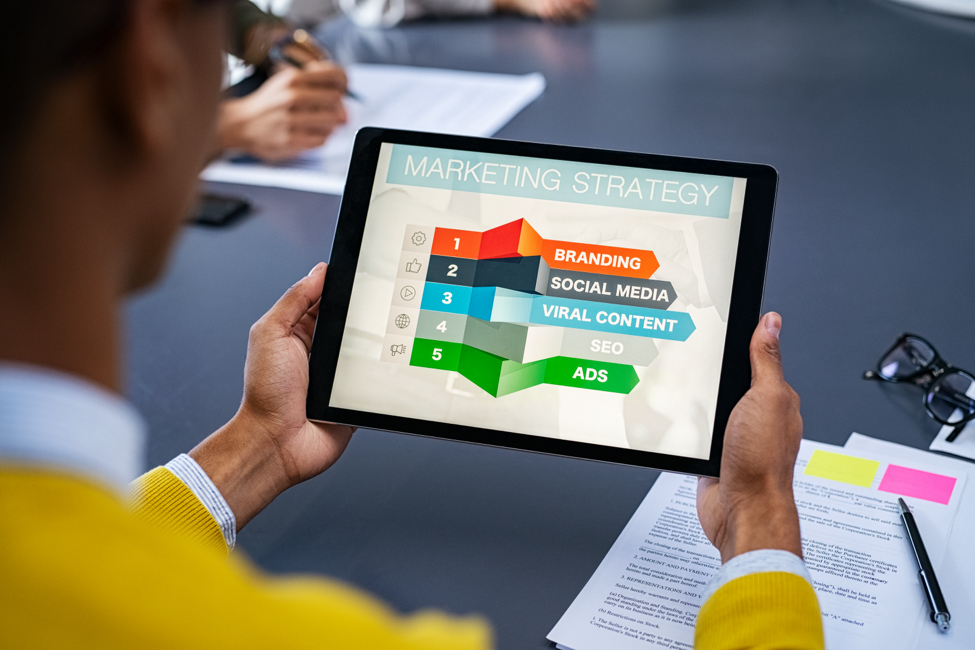
Digital marketing is a field that’s growing in value. Knowing how to adapt your skills to take advantage of this growth can be a bit unclear. Even if you’re comfortable with the advertising process, there are likely some areas where you can make your sales efforts more efficient and effective.
Fortunately, a digital marketing funnel may be exactly the strategy that you need. By segmenting your sales approach into three tiers of focus and applying small business marketing tactics to them, you can create a comprehensive plan to help you succeed.
In this article, we covered the features and functions of a digital marketing funnel. We then gave you some tips on how to roll a sales funnel into the process and how to wield these powers to support your small business with a solid strategy.
Combined with your sales skills, knowing how to use a digital marketing funnel can help you take your business to the next level. If you’re looking for more guidance on how to make the most of your resources, you can also check out Website Marketing Consulting. We would be happy to help.
Do you have any questions about using a digital marketing funnel? Let us know in the comments section below!
Mastering Mid-Funnel Marketing
Learn how mid-funnel marketing supports the buyer’s journey to conversation and improves customer lifetime value.
How to Craft a USP for a Business Like Yours
Learn how a USP that’s unique, clear and compelling breaks through the noise.
Reject the CTA for an Effective Relationship Marketing Strategy
Learn how replacing CTAs with customer-centric “pathways” transforms your relationship marketing strategy.
Author: James Hipkin
Since 2010, James Hipkin has built his clients’ businesses with digital marketing. Today, James is passionate about websites and helping the rest of us understand online marketing. His customers value his jargon-free, common-sense approach. “James explains the ins and outs of digital marketing in ways that make sense.”
Use this link to book a meeting time with James.

